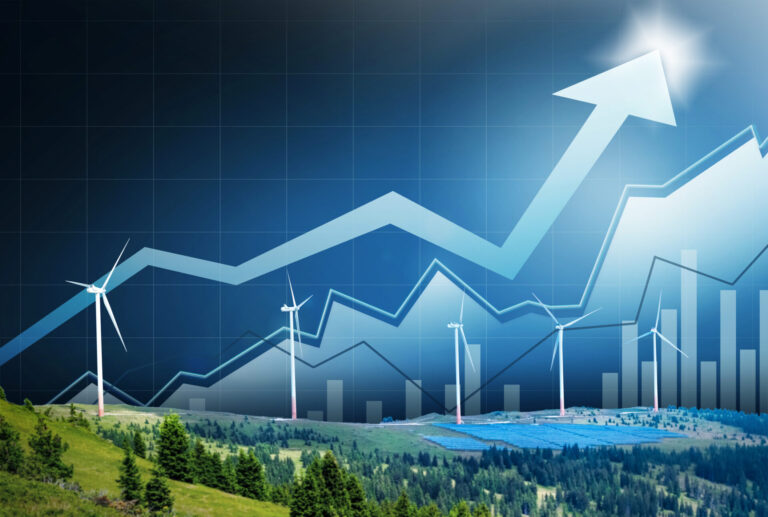Saturday, July 5, 2025
If you turn on your TV right now to your favourite show, you’d be almost guaranteed to find a commercial that mentions the environment or sustainability by your second commercial break. If you walk into a drug store and head down the shampoo aisle, you’d be more than likely to find several products that use environmental buzzwords in their packaging. Moreover, if you were to take a quick trip over to Google and key in “Environmental events in Canada 2023,” you’d find that there are countless dates on the calendar.
This is a relatively new phenomenon. Not many brands prioritized sustainability in their marketing back in the day. Nor were there many environmental events available. The progress made by Canada in terms of environmental awareness is undeniable.
However, we must now ask ourselves if all the buzz and efforts to raise awareness are truly making a significant impact.
The “OG” environmental movement
Let’s take a look at the history of the original environmental event — Earth Day. Earth Day’s origins date back to 1970. Prior to this, North Americans were living relatively obliviously and unsustainably. With the prevalence of inefficient automobiles and industrial factories, the air was becoming increasingly polluted. However, the detrimental consequences of this pollution were yet to be widely acknowledged, primarily due to the lack of comprehensive media coverage and public awareness. Bringing society to a place of understanding in how we play a role in the state of our planet was the initial push we needed to get the ball rolling on change.
Earth Day has been credited with achieving several milestones. The 1970 Earth Day led to the passage of environmental laws in the United States such as The Clean Water, 1972 and Endangered Species, 1973 Acts as well as the establishment of the Environmental Protection Agency (EPA), 1970. This set a precedent for other countries that followed by enacting similar laws like The Canadian Environmental Protection Act, 1999. Some other major milestones included The Brundtland Report, 1987, The Kyoto Protocol, 1997, The Copenhagen Accord, 2009, and The Paris Agreement, 2015.
Earth Day, in many ways, paved the way for the movement as a whole and propelled environmental sustainability into the mainstream. But now, thanks in part to the great work of the movement, buzzwords surrounding the environment are seemingly everywhere. A new event or campaign is going on every week and it seems everything, everywhere is always claiming to be sustainable.
During the 2023 Earth Day, I reflected on the influx of events I saw advertised and began to wonder if they were truly effective in moving the needle towards a better world and making the same notable changes that the Earth Day movement has over the years.
To find the answers that I was looking for, I attended as many environmentally focused events as I could over the past couple of months and spoke to several industry professionals. I ultimately learned that most organizations are genuine in their efforts and that there is more manpower than ever going into creating a more sustainable future for Canada. But with that said, there are some events and campaigns that may not have the same genuine motivations. Greenwashing, intentionally and unintentionally, has crept its way into some events and marketing campaigns and it’s not always obvious. Understanding how to parse through the noise is necessary to ensure we are all doing our part to move toward our goals.
Key questions to gauge event value
Through my research, I have narrowed down some questions you can ask yourself before participating in an event to distinguish whether it may be effective or fluff.
Who is holding the event?
Businesses have environmental, social, and governance (ESG) requirements, and governments on provincial and federal levels are constantly developing new initiatives to accelerate environment-related endeavours to propel Canada towards net zero. Non-profit organizations that are specifically created with an environmental goal in mind. While other environmentally focussed businesses, such as Environment Journal, are focused on providing events that provide valuable content and networking opportunities, such as the upcoming Excess Soils Symposium.
Looking carefully at who is hosting the event can help you decipher what direction it will likely go. Be wary of businesses holding events that may just be a marketing ploy, or events held by an institution with a self-fulfilling agenda.
Does the event have a clear focus?
There are many different focuses in the environmental industry and countless events, conferences, and webinars available to attend. Evaluating the agenda for the event and understanding the goals and objectives covered can provide substantial insight into whether the event has a coherent purpose. It’s also important to pay attention to the line-up of speakers and their qualifications.
Does the call to action resonate with your focus?
A key factor in determining whether you will receive the desirable education or opportunities you hope to obtain from an event is assessing its relevance. At first glance, it may seem to align with your particular interest or field but after attending you may find it lacked in-depth or specific content. Reviewing the agenda, panel, and speaker topics can help further contextualize the focus. An event can contain high-quality content for one individual that can be irrelevant to another.
Will there be an opportunity for interaction?
A significant aspect of attending events is forming connections. If you notice that the agenda is simply panel after panel with a five-minute networking break, it may not be as focused on collaboration as it should be.
Cristian Hurtado, manager of business development at QUEST Canada, believes that an effective environmental event will always have ample opportunity for interaction.
“Generally, anytime there is not an opportunity for interaction, I look back and think, ‘That might not have been worth my time.’ When I’m looking at an event and thinking about whether this is going to be worth my time, I’ll look at the agenda, look at the speakers, and if available look at the guest list… and just think who are the people that I want to be speaking to, what are the organizations I want to be engaging with, and what are the conversations I want to be having. But at the end of the day, it’s up to the folks setting the agenda to create the space for those conversations to happen.”
Talk-the-talk or walk-the-walk
Regardless of your sector, the underlying philosophy of any solid environmental event is the same. Your organization must truly walk the walk — not just talk the talk.
In Hurtado’s experience with higher quality and lower quality events, “Lot of times I’ll go to events where everyone’s saying the right thing. There’s no question that at most events, all the buzzwords are hit. Everyone is saying the things that need to be said. But then you leave the event and it’s back to real life. So I would rather go to an event where perhaps less is said, but we know out of the things that are said, the solutions that are identified, and the plans that are put forward, everyone leaves the event knowing, ‘Okay, this is what I need to do next in my job or in my personal capacity to move this forward.’”
Actionable takeaways are a key distinguisher between an event that is walking the walk versus one that is talking the talk. If you can leave feeling inspired with some clear next steps to take home with you, or back to your organization, then it is safe to say the event served its purpose.
However, it can be easy to spot an organization that practices what they preach by taking a closer look at what they’re doing behind the scenes.
Joe Chowaniec, executive director at Environmental Services Association of Alberta (ESAA), explained that in addition to continuously improving the programming to meet their attendees’ needs at RemTech, they also try to go above and beyond to match their messaging.
“We won’t partner with people that we think are doing it for the wrong reasons…We try to walk the walk, we do things at our event that reduce carbon emissions, we try to tell a positive story and make a difference.”
Similarly, Izzy Czerveniak, interim co-lead manager of the public engagement team at the David Suzuki Foundation, also believes that to understand an organization’s true motivations, it’s essential that you take a look at ways that their actions are aligning with their mission.
“At Future Ground Network, we are doing deeper work. We made a four-part anti-racism series that we made mandatory for members and we prefer to work with members who are on board with that type of work. So I guess there is a walk-the-walk approach to it… like what are we actually doing that’s different?”
Where do we go from here?
Some say the environmental event space is becoming oversaturated. With so many events happening every year, it’s challenging to decide which ones to attend and prioritize. When speaking with both Hurtado and Chowaniec, it was suggested that to improve the quality of the events we are seeing and make progress, organizations should focus more on partnering up for events to reduce the clutter in the space and enhance the content by delivering more value.
Chowaniec shared that oversaturation poses the challenge of diluting an important message: “People have to decide where they’re sending staff to and who they are sponsoring and it really dilutes the message in the market. I think there needs to be more partnerships and joint-type events.”
Hurtado emphasizes the value of actionable insights and takeaways, explaining that they could only be stronger by forming partnerships: “In the event space, I think we need to look more at partnering with each other and trying to deliver as much value and actionable insights from an event as possible. And that can more easily be done by partnering with each other.”
With environmental issues becoming embedded in our social fabric, it can be difficult to sort out what’s productive, what’s not, and how we can continue to progress.
Whether you are an individual, an organization, or a large corporation, it is crucial to assess the effectiveness of environmental events to drive meaningful change. While the proliferation of events and sustainability messaging is a positive sign of increased awareness, it is essential for the sake of time, costs and efficacy, to distinguish between genuine efforts and mere greenwashing.
Ultimately, environmental events should serve as catalysts for action and change. They should provide attendees with the space to interact with one another, expand their network, and learn from each other to facilitate progress.
For a list of our favourite environment industry events, click here.

Jennie Hornick is in the process of completing her publishing certificate at Centennial College to complement her Bachelor of Arts in Media Studies from Western University.
Featured image credit: Getty Images.












